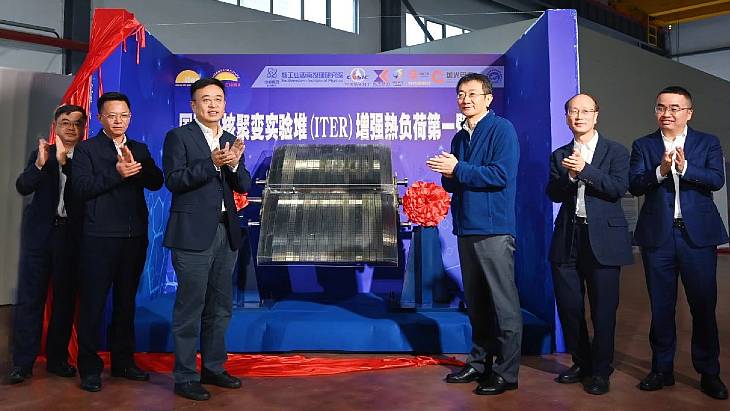The first wall directly faces the plasma at over 100 million degrees Celcius in the core, making it a critical component of ITER and involving the key technology of fusion reactor construction.
Luo Luolong, director of the China International Nuclear Fusion Energy Program Implementation Centre of the Ministry of Science and Technology, congratulated the first wall team for its "great efforts ... and great achievements".
After the ceremony to mark the occasion, the CNNC's Southwestern Institute of Physics signed a strategic cooperation agreement with the 10th institute of the China Aerospace Science and Industry Corporation on "the in-depth integration of the nuclear and aerospace industries, the expansion of their cooperative fields, and the establishment of regular cooperative mechanisms, to make greater contributions to the cause of nuclear fusion and aerospace", CNNC said.
ITER is a major international project to build a tokamak fusion device in Cadarache, France, designed to prove the feasibility of fusion as a large-scale and carbon-free source of energy. The goal of ITER is to operate at 500 MW (for at least 400 seconds continuously) with 50 MW of plasma heating power input. It appears that an additional 300 MWe of electricity input may be required in operation. No electricity will be generated at ITER.
Thirty-five nations are collaborating to build ITER - the European Union is contributing almost half of the cost of its construction, while the other six members (China, India, Japan, South Korea, Russia and the USA) are contributing equally to the rest. Construction began in 2010 and the current first plasma target date is 2025 although a new, later, timeframe is due to be announced in 2023.
The manufacturing and supply of equipment is shared among the partners. China and Russia are sharing the procurement of 225 enhanced heat flux first wall panels, with Europe producing 215 normal heat flux first wall panels.
According to the ITER explanation: "The 440 blanket modules that completely cover the inner walls of the vacuum vessel protect the steel structure and the superconducting toroidal field magnets from the heat and high-energy neutrons produced by the fusion reactions. As the neutrons are slowed in the blanket, their kinetic energy is transformed into heat energy and collected by the water coolant. In a fusion power plant, this energy will be used for electrical power production."
It adds: "The ITER blanket, which covers a surface of 600 m², is one of the most critical and technically challenging components in ITER: together with the divertor it directly faces the hot plasma. Due to its unique physical properties (low plasma contamination, low fuel retention), beryllium has been chosen as the element to cover the first wall. The rest of the blanket modules will be made of high-strength copper and stainless steel."





_92619.jpg)


_84504.jpg)

_96167_68292.jpg)

